#rise of empires: ottoman edit
Explore tagged Tumblr posts
Text
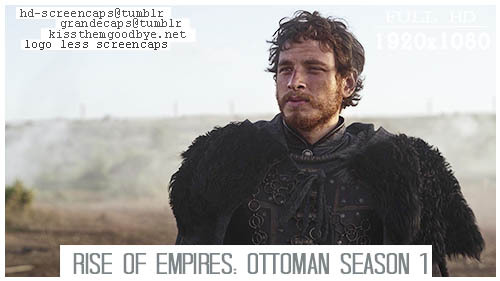
Rise of Empires: Ottoman - Season 1
Quality : HD screencaptures Amount : 9.733 files Resolution : 1.920 x 1.080 px
-Please like/reblog if taking!
#grandecaps#rise of empires ottoman#rise of empires: ottoman#rise of empires: ottoman edit#charles dances#netflix#cem yiğit üzümoğlu#fatih sultan mehmet#tuba büyüküstün#mara brankovic#ushan cakir#tomasso basili#emperor constantine#selim bayraktar#capped by macfraser82
13 notes
·
View notes
Photo





Rise of Empires: Ottoman
Every empire has a beginning. Forged of blood, steel, fortune and conquest. In 1453, Roman Emperor Constantine XI and Ottoman Sultan Mehmed II wage an epic battle for Constantinople.
Twenty-three armies have tried to take the legendery city.
All have failed.
89 notes
·
View notes
Photo

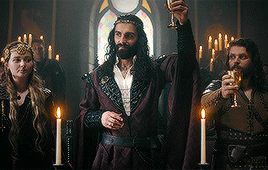
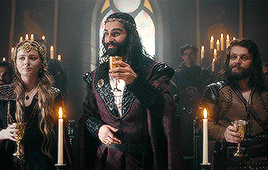
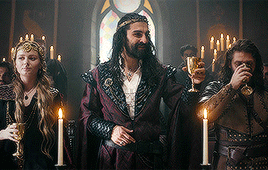
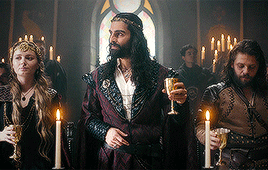
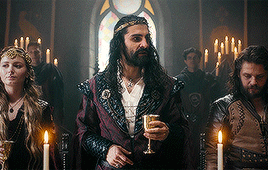


Daniel Nuță Rise Of Empires: Ottoman
#daniel nuta#daniel nuță#rise of empires: ottoman#romanian fc#period fc#( fc. )#( fc. ) wanted#( fc. ) wanted opposite#hes so pretty and for what#edit*#*
71 notes
·
View notes
Text
Analysis of Krul Tepes
Personality and References
Her personality is clearly very similar to Vlad The Impaler, who is referenced to in a certain way along with her past.

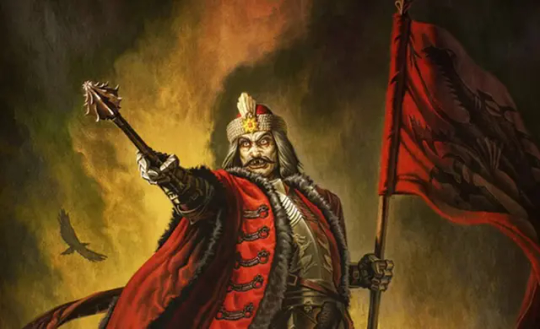
In short, for those who don't know, he is also known as Vlad III. He is the second son of Vlad Dracul, the ruler of Wallachia. He is taken as a hostage at a young age after his father's defeat by the Ottomans. Although he was described as a person who would not even harm a bird at the time, as he grew up, he became known as the cruel ruler known today by harboring a grudge against the Ottomans.
Edit: I also want to leave the documentary/series I watched here. The Ottoman Empire and the conquest of Istanbul are also discussed and Vlad is covered in the second season. It’s called rise of empires: ottoman.
Her being cheerful as a child and being sold as a slave, her fierce temper and cruelty as a ruler. It's all a big reference to Vlad The Impaler and also an expression of what she's experienced. The anger she shows when anyone opposes her or does not submit is a result of the effects of the peasants rebelling against her family and being taken as slave when she was a child. She wants them to submit because she thinks it will backfire on her. She thinks that this will make them fall in line, she wants to control them. This is one of the reasons why she treats Mika like a dog in the first chapters. (Also Vlad the Third and Third Progenitor Krul lol)
Her other name as fallen angel, "Belial", also means independence, self-sufficiency, and personal accomplishment. Sounds very familiar? At this point, we have to give Kagami some credits because his recognition of his characters and the things they reference is pure fine work.
Story background


As for her main storyline, it mostly remains behind these panels. While her older brother Ashera is under Shikama's manipulations, Krul resists it with her own will. At this point, as mentioned in the Fanbook it makes sense why Shikama placed Arcane on her as a restraining device and didn't choose her as one of his apostles. I also think that one of the reasons for Urd's actions in last chapters is because he is also based on what Krul told him. At the end of the day, Krul tries to save Ashera but fails.


Centuries later, she goes to Japan to look for clues from her brother. Makes her own plans and in the process, eternal life seems like a torment to her. Just like Ferid, she gets bored with it and wants to die. During this time, Ferid observes and studies Krul when he is around her. He acts measured next to a vampire who is superior to him in almost every way. However, even though he calculates everything, he underestimates Krul's power, or rather, he does not expect it.
Background demeanours


Although we don't get much context throughout the manga, Krul is the fearsome and powerful vampire queen to the vampires in the background. While Lest Karr contesting with her in power at that time, she makes the vampires in his faction obey her.
Aside that she manipulates him and uses him for more selfish reasons, she sympathizes with Mika and gives him a chance to save Yuu. Even after Mika turned into a demon, she wants to see how much Yuu wants to save him because she thinks that it wouldn't be fair to what he went through.
Krul also realizes that Shinoa squad is wandering around and she wants to give them a purpose, which is abnormal for a vampire. Unfortunately, we don't get anything about this later but with Shinoa's behavior in the last chapters, it is clear that she is actually influencing them in some way to find their purpose.
#owari no seraph#seraph of the end#krul tepes#vlad the impaler#ferid bathory#mikaela hyakuya#ashera tepes#such a queen in every way
40 notes
·
View notes
Text
Royal(ish) Reads: Jul-Sep 2024
Note: Some of the following links are affiliate links, which means I earn a commission on every purchase. This does not affect the price you pay. Also note that all titles mentioned are written by historians, researchers, or scholars. Only in rare cases are featured titles not written by someone with training in historical research.
For more book recommendations like in this post, you can follow my blog & Instagram


The Tragic Life of Lady Jane Grey by Beverley Adams (published Aug. 30, 2024) // All His Spies: The Secret World of Robert Cecil by Stephen Alford (published Jul. 4, 2024) // Dancing With Diana: A Memoir by Anne Allan (published Sep. 10, 2024)


Son of Prophecy: The Rise of Henry Tudor by Nathen Amin (published Jul. 15, 2024) // Planning the Murder of Anne Boleyn by Caroline Angus (published Aug. 30, 2024) // The Last Days of Richard III and the fate of his DNA by John Ashdown-Hill (new paperback version published Sep. 26, 2024)


The Fall of Egypt and the Rise of Rome: A History of the Ptolemies by Guy de la Bedoyere (published Sep. 10, 2024) // Richard Beauchamp: Medieval England's Greatest Knight by David Brindley (new paperback version published Aug. 29, 2024) // A Voyage Around the Queen by Craig Brown (published Aug. 29, 2024)


Henry III: Reform, Rebellion, Civil War, Settlement, 1258-1272 by David Carpenter (new paperback version published Sep. 24, 2024) // Stuart Spouses: A Compendium of Consorts from James I of Scotland to Queen Anne of Great Britain by Heather R. Darsie (published Sep. 30, 2024) // Prince Eugene of Savoy: A Genius for War Against Louis XIV and the Ottoman Empire by James Falkner (published Aug. 30, 2024)


Normal Women: From the Number One Bestselling Author Comes 900 Years of Women Making History by Philippa Gregory (new paperback version published Sep. 26, 2024) // The Romanovs: Imperial Russia and Ruling the Empire, 1613-1917 by Professor Lindsey Hughes, Professor Erika Monahan (2nd edition published Sep. 19, 2024) // Lady Pamela: My Mother's Extraordinary Years as Daughter to the Viceroy of India, Lady-in-Waiting to the Queen, and Wife of David Hicks by India Hicks (published Sep. 3, 2024)


Hannibal and Scipio: Parallel Lives by Simon Hornblower (published Sep. 26, 2024) // Oliver Cromwell: Commander in Chief by Ronald Hutton (published Aug. 27, 2024) // Catherine, the Princess of Wales: The Biography by Robert Jobson (published Aug. 1, 2024)


Henry V: The Astonishing Rise of England's Greatest Warrior King by Dan Jones (published Sep. 12, 2024) // Courtiers: Intrigue, Ambition, and the Power Players Behind the House of Windsor by Valentine Low (new paperback version published Sep. 17, 2024) // Kings & Queens: The Real Lives of the English Monarchs by Ann MacMillan, Peter Snow (new paperback version published Sep. 12, 2024)


The Romanovs Under House Arrest: The Russian Revolution and A Royal Family’s Imprisonment in their Palace by Mickey Mayhew (published Aug. 30, 2024) // Queen Victoria's Favourite Granddaughter: Princess Victoria of Hesse and by Rhine, the Most Consequential Royal You Never Knew by Ilana D. Miller (published Aug. 19, 2024) // Cooking and the Crown: Royal recipes from Queen Victoria to King Charles III by Tom Parker Bowles (published Sep. 26, 2024)


Pure Wit: The Revolutionary Life of Margaret Cavendish by Francesca Peacock (new paperback version published Sep. 12, 2024) // Henry VIII and the Plantagenet Poles: The Rise and Fall of a Dynasty by Adam Pennington (Sep. 30, 2024) // Everyday Life in Tudor London: Life in the City of Thomas Cromwell, William Shakespeare & Anne Boleyn by Stephen Porter (new paperback version published Aug. 15, 2024)


Kingmaker: Pamela Churchill Harriman's Astonishing Life of Seduction, Intrigue and Power by Sonia Purnell (published Sep. 19, 2024) // The Secret Diary of Queen Camilla by Hilary Rose (published Sep. 26, 2024) // Adventures in Time: Heroes: The Box Set by Dominic Sandbrook (published Aug. 29, 2024)


Adventures in Time: Heroines: The Box Set by Dominic Sandbrook (published Aug. 29, 2024) // Justinian: Emperor, Soldier, Saint by Professor Peter Sarris (new paperback version published Sep. 12, 2024) // Women in the Valley of the Kings: The Untold Story of Women Egyptologists in the Gilded Age by Kathleen Sheppard (published Aug. 19, 2024)


Marriage, Tudor Style: Love, Hate & Scandal by Sylvia Barbara Soberton (published Jul. 29, 2024) // A History of the Roman Empire in 21 Women by Emma Southon (new paperback version published Jul. 4, 2024) // A Rome of One's Own: The Forgotten Women of the Roman Empire by Emma Southon (new paperback version published Sep. 17, 2024)


Cleopatra: The Woman Behind the Stories by Alexandra Stewart and Hannah Peck (published Aug. 15, 2024) // The Wisest Fool: The Lavish Life of James VI and I by Steven Veerapen (new paperback version published Sep. 5, 2024) // The King's Loot: The Greatest Royal Jewellery Heist in History by Richard Wallace (published Aug. 8, 2024)


The Beaumonts: Kings of Jerusalem by Kathryn Warner (published Sep. 30, 2024) // Emperor of the Seas: Kublai Khan and the Making of China by Jack Weatherford (published Sep. 26, 2024) // Ravenous: A Life of Barbara Villiers, Charles II's Most Infamous Mistress by Andrea Zuvich (published Jul. 30, 2024)
13 notes
·
View notes
Text
Vlad The Impaler MEGAPOST!
(Please reblog this as much as possible!)
________
Best books to take your information from:
1. "Corpus Draculianum" by Adrian Gheorge, Albert Weber and Thomas M Bohn [RO/GER] 2. "Vlad der Pfähler–Dracula: Tyrann oder Volkstribun?" by Thomas .M Bohn [GER] 3. "Vlad The Impaler: Dracula" by Stefan Andreescu [RO/ENG-rare to find] ________
Useful links:
https://www.youtube.com/@CorpusDraculianum = Corpus Draculianum YouTube channel, by far the best source of information about Vlad you can find on the internet. Most of The videos are in Romanian with English subtitles. (At the bottom of this post you gonna find a list with Every video from their channel) https://www.youtube.com/@corpusdraculianum.english = Another CD channel with English video made using AI. https://vk.com/voivode_vlad_tepes = Russian VK group where you can find tons of information on Vlad and Wallachia in general. https://www.facebook.com/groups/forum.corpus.draculianum = Corpus Draculianum's oficial group, Here you can talk with the authors and many others experts. http://arhivamedievala.ro = Here you can find and look at Vlad’s letters (and others of course) http://siebenbuergenurkundenbuch.uni-trier.de/catalog?commit=sortiere&q=Vlad%20tepes&search_field=all_fields&sort=pub_date_sort%20asc,%20title_sort%20asc&utf8=%E2%9C%93 = German site that contains Vlad’s documents along with many others like Vlad Dracul, Radu The Handsome, Stephen the Great, etc. ________
Other links:
Stefan Andreescu - Vlad Tepes / Romanian. https://pdfcoffee.com/stefanandreescu-vlad-tepes-pdf-free.html _ Vlad Tepes und die Sachsischen Selbstverwaltungsgebiete Siebenburgens By Gustav Gundish in Revue roumaine d'histoire (1969) Available for download in pdf format: http://dspace.bcucluj.ro/handle/123456789/139788 _ Ioan Bogdan: Documente și regeste privitoare la relațiile Țăriĭ Rumînești cu Brașovul și Ungaria în secolul XV și XVI Publication date 1902 Source Biblioteca Digitală a României This work contains important letters and documents by Vlad III Drakulya and his contemporaries in Romanian language. http://www.digibuc.ro/ _ Documenta Romaniae Historica. Series D. Relations between the Romanian Countries. Volume 1: 1222-1456 https://kupdf.net/.../documenta-romaniae-historica-seria... A remarkable collection of letters, official documents etc in Latin and Romanian by Vlad III Drakulya, Janos Hunyadi and many others. 573 pages. Available for download in pdf format. _ Another important collection of documents by Vlad III Drakulya, his father Vlad Dracul, his brother Radu cel Frumos and other historical figures. 687 pages. In Romanian. Available for download in pdf format. Documenta Romaniae Historica. Seria B : Ţara Românească. Volumul 1 : 1247-1500 https://en.calameo.com/books/000827433682e93065018 _ LA VICTOIRE DE VLAD L’EMPALEUR SUR LES TURCS (1462) par NICOLAE STOICESCU, 1976, in Revue roumaine d’histoire http://dspace.bcucluj.ro/handle/123456789/139824 Available for download in pdf format _ LA VICTOIRE DE VLAD L’EMPALEUR SUR LES TURCS (1462) par NICOLAE STOICESCU, 1976, in Revue roumaine d’histoire http://dspace.bcucluj.ro/handle/123456789/139824 Available for download in pdf format _ Critical edition of Laonikos Chalkokondyle’s “Histories” by Egenius Darkó. Laonici Chalcocandylae Historiarum demonstrationes. Ad fidem codicum recensuit, emendavit annotationibusque criticis instruxit Eugenius Darkó by Chalkokondyls, Laonikos, ca. 1430-ca. 1490 Publication date: 1922 Publisher: Budapestini Sumptibus Academiae litterarum hungaricae Languages: Latin, Greek Available for download in pdf format https://archive.org/.../laonicichalcocan00chaluoft/mode/2up “The Histories”, by Laonikos Chalkokondyles describes the fall of the Byzantine empire and the rise of the Ottomans. Written sometime between 1464 and 1468, it centres around the capture of Constantinople in 1453. However, it also covers many events that were happening in Eastern Europe, where the Ottomans, Hungarians and other states were vying with each other. Itgives us an account of Vlad III Drakulya too. _ PÂNDELE OLTEANU LIMBA POVESTIRILOR SLAVE DESPRE VLAD ȚEPEȘ Ed. Acad. R. P. R., Bucarest, 1961, 409 p. (TALES IN SLAVIC LANGUAGE ABOUT VLAD ȚEPEȘ) In Revue roumaine d’histoire, 1965, Bucureşti : Editura Academiei Române. Language: French Pages 140-145 An old but very interesting paper, available for donwload in pdf format. http://dspace.bcucluj.ro/handle/123456789/139764 _ Vlad Ţepeş şi Naraţiunile Germane şi Ruseşti asupra lui : Studiu critic (1896) [Vlad Ţepeş and the German and Russian Narratives about Him: A Critical Study] Author: Bogdan, Ioan (1864-1919). Bucureştĭ : Editura Librăriei Socecǔ & Comp. Language: Romanian Available for download in pdf format https://upload.wikimedia.org/.../Ioan_Bogdan_-_Vlad_%C8... _ The slanderous German incunabula about Vlad III Drakulya. 1) The two incunabula (“Dracole Wayda”, Nuremberg 1488, Augsburg 1494) which are obviously both based on a common original text, depict a misleading and barbaric image of the Wallachian Prince. They are two out of at least eleven further prints of this kind, which appeared on the book markets of rich German merchant towns as of 1488. All pamphlets start with a very brief biography of Vlad III, followed by an unsystematic listing of almost 50 gruesome anecdotes from his reign. The spreading of these historically largely made up stories is doubtlessly connected with the growing reading public’s craving for sensation. Available for download in pdf format. https://opacplus.bsb-muenchen.de/title/BV023354729 and https://opacplus.bsb-muenchen.de/title/BV023354738 2) The Saint-Gall manuscript. A composite manuscript consisting mainly of historiographic and hagiographic content. The texts were written between 1450 and 1550, then assembled as a volume in 1573 by St. St. Gall monk Mauritius Enk. This text is only transmitted in three other manuscripts: one at the library of Lambach Abbey in upper Austria, one at the British Library in London, and one at the Municipal Library of Colmar in France. https://www.e-codices.unifr.ch/en/csg/0806/283 See also Matei Cazacu, “ GESCHICHTE DRACOLE WAIDE UN INCUNABLE IMPRIMÉ A VIENNE EN 1463” , available for dowload in pdf format. https://www.persee.fr/.../bec_0373-6237_1981_num_139_2... https://www.academia.edu/.../Croisade_tardive_et_d%C3... _ the chronicle of Antonius Bonfinius, “Historia Pannonica: Sive Hungaricarum Decades ” . Antonio Bonfini (Latin variant: Antonius Bonfinius; 1427‒1502) was an Italian humanist and poet who spent the last years of his career as a court historian in Hungary. He was a secretary to King Matthias Hunyadi Corvinus and was commissioned by him to produce a work chronicling the History of Hungary. Bonfini arrived at Matthias’s court in 1486; the king assigned him this project in 1488. Under Matthias’s successor Vladislaus II, Bonfini could continue his work intermittently until 1497. Bonfini gives in his work a lengthy description of the alleged “crimes” of the Wallachian Prince Vlad III, closely resembling the German stories. Some of the paragraphs coincide with the German pamphlets, while others are different. Bonfini apparently used a printed or manuscript version of the malicious German narratives about Drakulya which were circulating at that time. 1) Original pages of Bonfini “Rerum Hungaricarum Decades”, available at http://epa.oszk.hu/.../MKSZ_EPA00021_1984_100_04_330-373... 2) Critical edition of Bonfini’s work by I. Fogel, B. Ivanyi and L. Juhasz, Lipsiae, Bibliotheca Scriptorum Medii Recentisque Aevorum SAEC. 3) Antonii Bonfini Asculani Rerum Hungaricarum decades libris 45. comprehensae ab origine gentis ad annum 1495. Accessit index rerum locupletissimus recensuit et praefatus est d. Carolus Andreas Bel .. (1771). Available at https://archive.org/details/bub_gb_34sty47HR2EC _ His monetary policy is a scarcely investigated side of the rule of Wallachian Voivode Vlad III Drakulya. The Octavian Iliescu’s paper “Vlad l'Empaleur et le droit monétaire” gives us a very interesting insight into this topic. In “Revue roumained'histoire”, 1979, Bucureşti, Editura Academiei Române. Available for download in pdf format at http://dspace.bcucluj.ro/handle/123456789/139834 See also Matei Cazacu, “L'impact Ottoman sur le Pays Roumains et ses incidences monétaires (1452-1504). In “Revue roumaine d'histoire”, 1973, Bucureşti : Editura Academiei Române. Available for download in pdf format at http://dspace.bcucluj.ro/handle/123456789/139807 _ I would like to draw attention to this interesting book about diplomatic relationships between Transylvania, Hungary, Moldova and Wallachia in the period 1468 to 1540. It’s called “Acta et epistolae relationum Transylvaniae Hungariaeque cum Moldavia et Valachia” Volumen primum, by Veress, Endre (Budapest,1914), Publisher Kolozsvár Fontes rerum transylvanicarum, in Hungarian and Latin. It contains important documents and letters about the last years of life of Vlad III, his death and the political events of the period. Those interested can download it in pdf format at https://archive.org/details/actaetepistolaer01vereuoft _ here are two more sources. 1) Magyar diplomacziai emlékek Mátyás király korából 1458-1490 , by Iván Nagy, Albert Nyáry, Matthias, 1877, Publisher A M. Tud. Akadémia. Avaliable for download at https://archive.org/details/magyardiplomacz00mattgoog 2) Monumenta Hungariae historica: Magyar történelmi emlékek, byTörténelmi Bizottság , Magyar Tudományos Akadémia,1875,Publisher Magyar Tudományos Akadémia. Available for download at https://archive.org/details/monumentahungar27akadgoog _ I want to introduce to you the work of Ludovico Antonio Muratori (1672-1750) “Rerum Italicarum scriptores ab anno aerae christianae quingentesimo ad millesimumquingentesimum” (1731), Volume 18, Publisher Mediolani : ex typographia Societatis Palatinae in Regia Curia. Ludovico (also spelled Lodovico) Antonio Muratori was an Italian historian, notable as a leading scholar of his age. Duke Rinaldo I d'Este (1700) appointed him archivist and librarian in Modena’s Ducal library, which position he held until his death in that city. He studied sources for a history of Italy, and as a fruit of his researches there appeared the large work, “Rerum italicarum Scriptores ab anno æræ christianæ 500 ad annum 1500” (Writers on Italy, 500–1500). It was published in twenty-eight folio volumes with the assistance of the Società Palatina of Milan (Milan, 1723–51). In Volume 18 of his massive work (18.2: Matthaei de Griffonibus “Memoriale historicum de rebus Bononiensium”: aa. 4448 a.C.-1472 d.C.), we can find a brief account of the Wallachian victories against the Ottoman forces of Mehemet II in the summer of 1462. The thrilling news of the attack on the Ottoman camp by the troups of Vlad III Drakulya were brought to Bologna by Venetian merchant’s letters. According to these reports, 40000 Turks were slained or take prisoners. Those interested can download Muratori’s work at https://archive.org/details/rerumitalicarums271mura See also the letter of Dominicus Balbi to Signoria di Venetia, 28 July 1462, in Monumenta Hungariae historica: Magyar történelmi emlékek https://archive.org/details/monumentahungar31akadgoog _ The letter allegedly sent by Vlad III Drakulya Ţepeş, Voivode of Wallachia, to Sultan Mehmet II on 7 November 1462 and his supposed treason against Matthias Hunyadi Corvinus, in “Pii secvndi pontificis max. Commentarii rerum memorabilium, quae temporibus suis contigerunt” by Pius II, Pope, 1405-1464; Gobellinus, Joannes; Ammannati Piccolomini, Jacopo, 1422-1479; Pius II, Pope, 1405-1464. Apologia ad Martinum Mayer. Publication date: 1584 Publisher: Romae, Ex typographia Dominici Basae Language: Latin Available at: https://archive.org/details/piisecvndipontif00pius [Pope Pius II, born Enea Silvio Bartolomeo Piccolomini (18 October 1405 – 14 August 1464). He was born at Corsignano in the Sienese territory, Tuscany, Italy. His major work is the “Commentaries”.] For an excellent analysis of the complex political background of this entry in Pius II work, I refere those interested to Alexandru Simon’s paper “AHumanist’s Pontifical Playground: Pius II and Transylvania in the Days of John Dragula”, in Transylvanian Review . 2020 Supplement, Vol. 29, p35-70. 36p. Available online at (This link usually dosen't work but it will be the first pop up if you google "A Humanist’s Pontifical Playground Pius II and Transylvania in the Days of John Dragula") https://web.a.ebscohost.com/abstract?direct=true&profile=ehost&scope=site&authtype=crawler&jrnl=12211249&AN=149408111&h=yxGso1dhUtosN0nJiSVsTxjOATB20ADd7awuq45SSQbuV1z7dZTj%2fxaoVXAkNGghLlrC5EYLvekc4%2f4svJpxNQ%3d%3d&crl=f&resultNs=AdminWebAuth&resultLocal=ErrCrlNotAuth&crlhashurl=login.aspx%3fdirect%3dtrue%26profile%3dehost%26scope%3dsite%26authtype%3dcrawler%26jrnl%3d12211249%26AN%3d149408111 ____
List of Corpus Draculianum videos:
Vlad Țepeș is not the founder of Bucharest #shorts: https://youtube.com/shorts/C-zX6Ck-NnQ Vlad Țepeș and no other contemporary voievode sign with his own hand. #shorts: https://youtube.com/shorts/KaEmtV2FxQM Are there any documents written by Vlad the Impaler? #shorts: https://youtube.com/shorts/q9yG9XmaBj4 Vlad the Impaler did not build the Poenari Fortress #shorts: https://youtube.com/shorts/6_evjd56qW0 Vlad Tepes on Netflix - a gross historical forgery? https://youtu.be/i6mtzCJWF5Y Bran Castle has nothing to do with Vlad Țepeș #shorts: https://youtube.com/shorts/XjmYDu1iOwg Where did Vlad the Impaler live? A real tourist guide: https://www.youtube.com/watch?v=FnU3YM9ReVw Vlad the Impaler, a murderer as big as Hitler, Stalin and Mao?? #shorts: https://youtube.com/shorts/8i35rqDY5Dk How can we find the descendants of Vlad Țepeș? #shorts: https://youtube.com/shorts/dHhDqlqOLQA The most "truthful" source about Vlad Țepeș #shorts: https://www.youtube.com/shorts/VpuacxjtaSw Who lied the most about Vlad Țepeș? #shorts: https://youtube.com/shorts/wsEi510hyLY How many people did Țepes massacre? Who lies more? https://youtu.be/qXUqRuJUL8I Were the Saxons to blame for the arrest of Vlad Țepeș? #shorts: https://youtube.com/shorts/RBcfdrsfXzw Why did Vlad the Impaler make Bucharest the new capital of Wallachia? #shorts: https://youtube.com/shorts/7N5vXqTm7aY Did Vlad the Impaler kill people with his own hands? #shorts: https://youtube.com/shorts/NSc77o7seh0 The last glow of Vlad Tepes. Campaigns in Serbia and Bosnia (winter 1476): https://www.youtube.com/watch?v=HdmFWpC4XQM&t=562s Vlad Țepeș's fiercest domestic adversary: https://youtu.be/5r-OBjMdQNo Vlad Tepes and love. What do historical sources tell us? https://www.youtube.com/watch?v=1Lih3Lx4M7s Childhood next to sultans. A decade as a hostage in the Ottoman Empire: https://youtu.be/_UChyRGs0YI When did Vlad the Impaler impaled for the first time? https://www.youtube.com/watch?v=65rzSVBx71I We explain the nickname "Draculea" in 100 seconds: https://www.youtube.com/watch?v=N3zLZKMSisA We explain the nickname "Țepeș" in 100 seconds: https://youtu.be/qgOZ3kELVLQ Unique event: Vlad the Impaler destroys Ottoman transport fleet: https://www.youtube.com/watch?v=tQP420LtdYo&feature=youtu.be The famous night attack on the Ottoman camp: attack on the Sultan or tactical slaughter? https://www.youtube.com/watch?v=sEfoIT6RZPo&feature=youtu.be
The portraits of Tepes:
Why do "Dracula" portraits maybe not show Vlad Țepeș? #shorts: https://youtube.com/shorts/4Qqt7gFDjyo cryptoportrait: Portrait of Vlad the Impaler hidden in paintings of the time: https://youtu.be/oO2-cKLaz1E
Death and tomb of Țepeș:
Is the tomb of Vlad Tepes in Bucharest? #shorts: https://www.youtube.com/shorts/riQKOWqBeso An unknown document surprises us with the place of the death of Țepeș:
https://youtu.be/FOAFowF9erM A new historical source rewrites the death of Vlad Țepeș: https://www.youtube.com/watch?v=FOAFowF9erM Where is Vlad Tepes' tomb really located? https://www.youtube.com/watch?v=sxwEyYNkPIQ
Stephen the Great:
Was Stephen the Great beheaded after his death? #shorts: https://youtube.com/shorts/H0yGbTHf0HsAn epic victory missed by Stephen the Great and Vlad the Impaler? https://www.youtube.com/watch?v=B4mq9ZR1FXc Vlad Tepes vs Stephen the Great. Relatives, friends or enemies? https://www.youtube.com/watch?v=Xm1Njpx8pg0
Radu the Handsome:
Was Radu the handsome converted to Islam? #shorts: https://youtube.com/shorts/us7jIi2HBHAThe first gay voivode in Romanian history? It's not what you think! https://youtu.be/cYhqwvcgVIw
Mircea, brother of Tepes:
Stronger than Vlad the Impaler? The forgotten hero of Varna (1444): https://www.youtube.com/watch?v=YBbJ9cuwLBQ
Theory and sources of history:
Lost history. Why do we know so little about the Romanian Middle Ages? #shorts: https://youtube.com/shorts/m3-ityQuIIM Where did 90% of Romanian medieval history burn? #shorts: https://youtube.com/shorts/IXlOBikoHBoWhy Do the people who lived through an event know better than historians? #shorts: https://youtube.com/shorts/eCfz3J8za2c What is a historical narrative? #shorts: https://youtube.com/shorts/5T0ibyPJiRs Why don't Romanians trust historians? #shorts: https://www.youtube.com/shorts/Xzb67UgxUrk The limitations of the historian as a scientist. Why science doesn't care about your feelings: https://www.youtube.com/watch?v=6cAMyOWSvHc
The Ottoman world and the Romanians:
Conquest or management? The true intentions of the Ottomans towards the Romanian Countries: https://youtu.be/e3s6en3Z1PI How the Ottomans saw and shared the world #shorts: https://youtube.com/shorts/LfNisI783xc How did Vlad Țepeș evade paying the tax? #shorts: https://youtube.com/shorts/2H1a-JgHGt0 Janissary were very few in the Ottoman armies #shorts: https://youtube.com/shorts/FQnHEL18tT8 What did the Ottomans want to do with the Romanian Countries in the 19th century? 15TH CENTURY? #shorts: https://youtube.com/shorts/36hI2bLUBFQ The Ottomans didn't have yatagans in the Middle Ages #shorts: https://youtube.com/shorts/SzcdKXe2KJU Stop confusing the Turks with the Ottomans! #shorts: https://youtube.com/shorts/hJne4ohZ12k Unpublished Ottoman sources about the multiple night attacks of the Tepes: https://youtu.be/7yKUBUhjrGg Spahiii: the main Ottoman troops. Everything you are not told on the internet: https://youtu.be/kuigDHJiLMg Organization of the Ottoman armies on the time of Vlad Tepes and Stephen the Great: https://youtu.be/I1GPD0CMuEs Romanian children for the Janissary? Myth or truth? https://www.youtube.com/watch?v=gVHkXnKdHFM The true strength of the Ottoman armies during Vlad Țepeș's time: https://youtu.be/5lurUaI1W6w
The Hungarians, Vlad Tepes and the Romanians:
What did the Hungarians order Vlad Țepeș to do in the spring of 1462? #shorts:
https://youtube.com/shorts/wpwUjPqnaUk
Vlad the Impaler did not suffer much as a prisoner in Hungary (1462-1474) #shorts:
https://youtube.com/shorts/Se7wBs6_mrE Why did Matthias Corvinus arrest Vlad the Impaler? #shorts: https://youtube.com/shorts/pi8AYAEi3YQ Why did Hungary's army fail against the Ottomans? #shorts: https://youtube.com/shorts/3cQ7aI12rRk Why did Matthias Corvinus leave Vlad the Impaler ALONE in front of the Ottomans? #shorts: https://youtube.com/shorts/3C2BC1_WzyA Did the Hungarians make Vlad the Impaler a hero? #shorts: https://youtube.com/shorts/GA7WovNUr-M Descendants of Vlad Tepes. Did any of them make it to the throne of England? https://youtu.be/x-JUPq5NEEo
Vampirology:
What did Bram Stoker know about Vlad the Impaler? #shorts: https://youtube.com/shorts/sAv2qLQIR3s
Vatican, Catholic Church:
Is the Vatican Archive being manipulated? #shorts: https://www.youtube.com/shorts/swNNm_FfF_Q Conspiracy at the Vatican for Vlad Țepeș? An interesting speculation #shorts: https://youtube.com/shorts/6aP1jIGsdxo How can you get into the Vatican Secret Archives? #shorts: https://youtube.com/shorts/hT-GFpT4lr4
General discussion:
When did the Romanians come out of the Middle Ages? https://youtu.be/z7kkZHzRU7g We explain the voivode in 100 seconds: https://youtu.be/3sy7u5LyGME We explain the VALLAH TYRANTS in 100 seconds: https://youtu.be/XiT9qbSwcDMWe We explain the impaling punishment in 100 seconds: https://www.youtube.com/watch?v=GfWkl-ArNc0
Videos in English:
How did Vlad the Impaler look like on the Battlefield? https://youtu.be/1HW0SqTTKyo Wallachian Soldier in Vlad the Impaler's Times: https://youtu.be/4GrGPJo41dc| Who invented Dracula? 4 Plausible Scenarios: https://youtu.be/iwYaDE10iIQ Vlad the Impaler's most ferocious domestic enemy: https://www.youtube.com/watch?v=1hm7Uzroqeg Vlad the Impaler's love interests. What do historical sources really tell? https://www.youtube.com/watch?v=Wnt86L5v9aQ A childhood next to the Sultans. Dracula's decade as hostage in the Ottoman Empire: https://www.youtube.com/watch?v=ffT98Axy08M Vlad the Impaler settles all family business with his brother's murderers: https://www.youtube.com/watch?v=XsUt9H39yRM
Reading sources:
Reading from the chronicle of Chalkokondyles, the most detailed source about Tpeș: https://www.youtube.com/watch?v=_wBtDqNafLY
Podcasts, interviews:
About imaginary massacres and imagining a medieval hero | INTERVIEW on Radio7: https://youtu.be/gM89e5XBKNI Romanian Academy Awards. Corpus Draculianum awarded for the first 2 volumes printed: https://youtu.be/tthRdC3HxjU Mehterhaneaua - Exclusive music of sultans, pashas and... voivodes: https://youtu.be/F_5cGqoAKs0 Music in the Romanian Lands from Mircea the Elder to Matei Basarab: https://youtu.be/TUVk22udfX4 History workshop with Dr Albert Weber: https://youtu.be/QtXOYNNxYP4 An interview with Dr. Alexandru Anca, editor of the Byzantine texts in the Corpus Draculianum: https://youtu.be/weqcB6Ta1nc Dr. Liviu Cîmpeanu: The Ottomans replaced Vlad Dracul with a ... https://youtu.be/HGBbYjhZyRE Dr. Liviu Cîmpeanu: Vlad Dracul was NOT in the Order of the Dragon, but... https://youtu.be/xabxeDBFnh8 Dr. Liviu Cîmpeanu on Vlad Dracul: https://youtu.be/7PVRxNNpme8
______
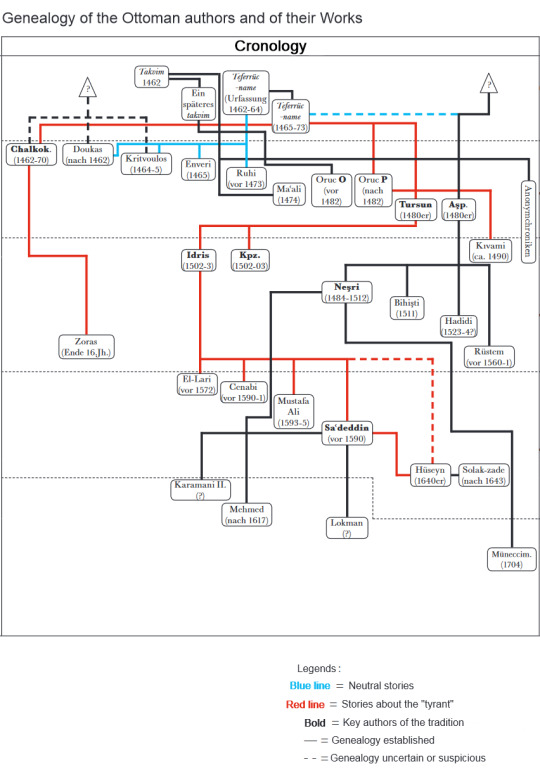
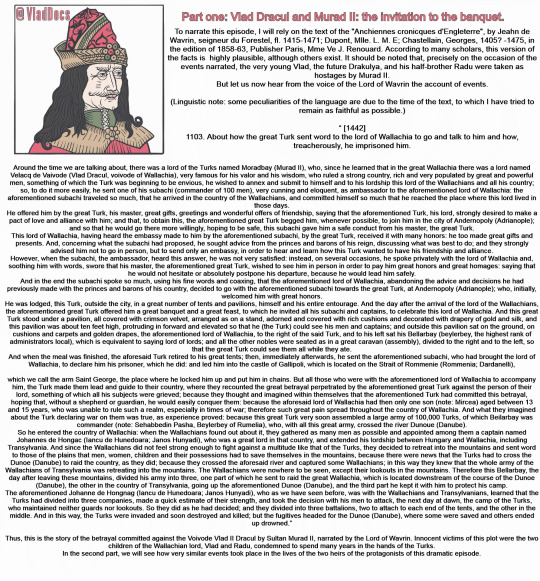
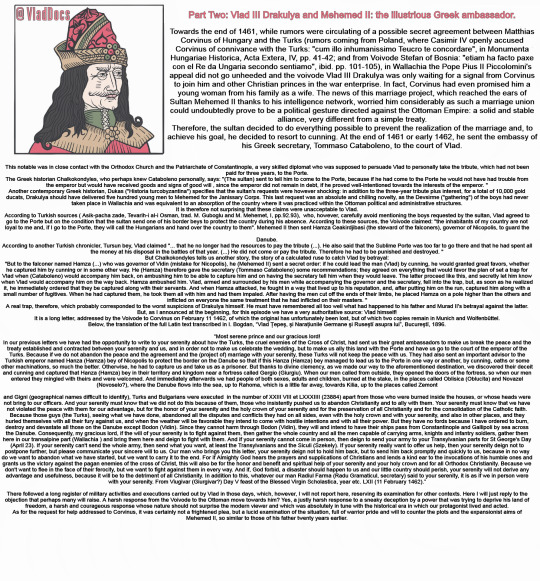
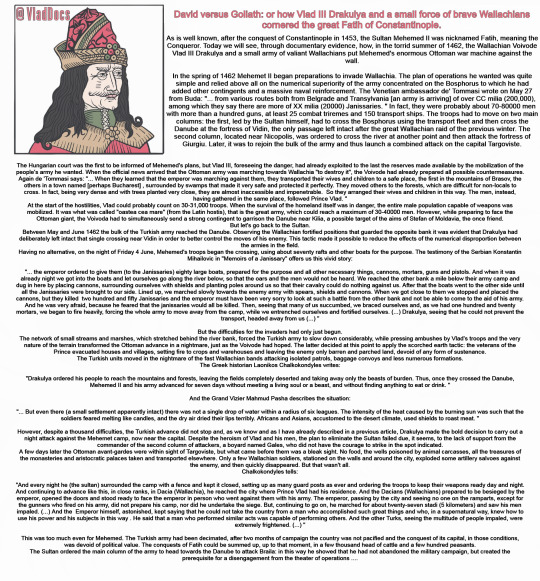
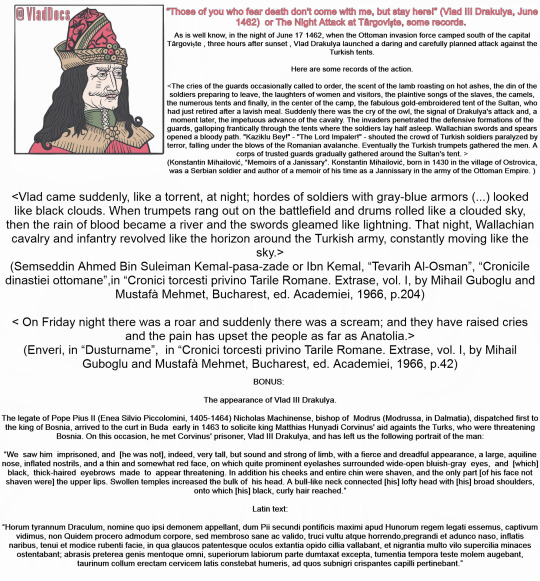
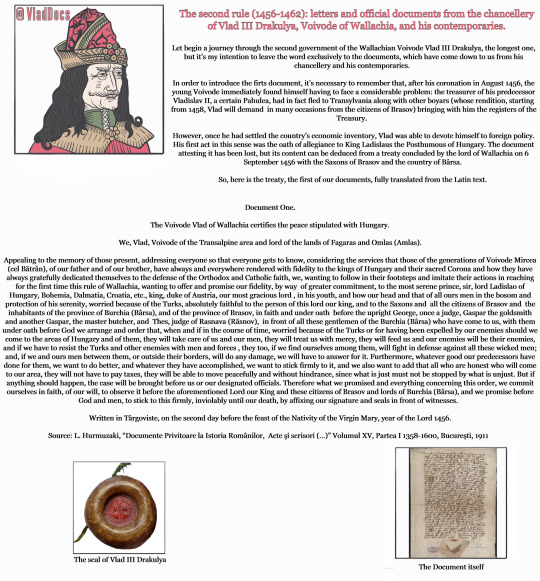

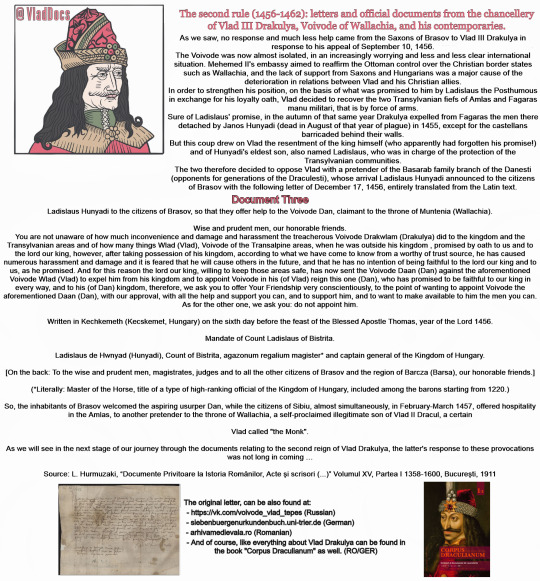
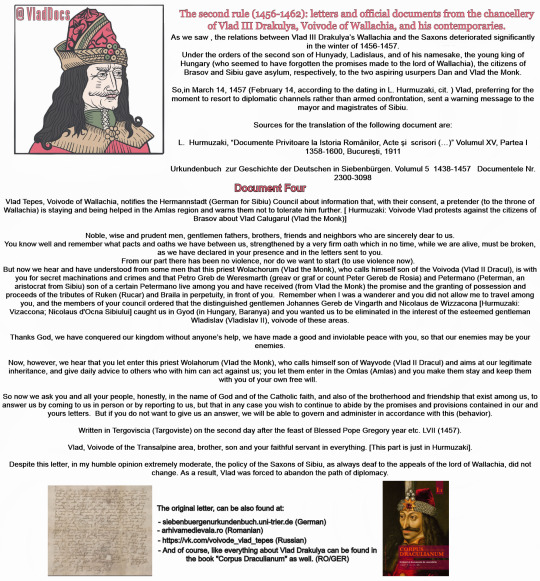
#MEGAPOST#vlad the impaler#vlad dracula#Vlad Tepes#Vlad III#vlad țepeș#corpusdraculianum#dracula#15thcentury#wallachia#Romania#history#medieval#gothic#easterneurope#ottoman
129 notes
·
View notes
Note
Quick question, but where would you suggest to start researching? I’ve never really done it before, but I want to, but I’m worried I wouldn’t get a reliable resource and only realize it later. Any suggestions?
So Im gonna guess this is gonna refer to historical events and such (bc I mentioned that), BUT I think it can be applied to most research? This is how I go about it!
First, wikipedia article! Obviously they have the sources that you can dig through, but I use it to skim over the general idea (like if it's a war or a type of fashion), and make notes on what I want to focus on. Earlier I was researching how the Ottoman Empire was split up by France and Britain after WWI, and the interesting/turbulent decades of Syria as an independent state following the fall - that's A LOT of complicated shit to go through. So, from there I make a list of what's most interesting to me.
(This may be tough depending on how broad your subject is! "American Civil War" is really broad so maybe pick a very specific aspect that's interesting you the most. The battles? How a specific part of the US was affected? The history of black Northern soldiers vs Southern soldiers? etc etc)
Narrow it down - from "History of the Ottoman Empire", focus on "Post-WW1 Fall of Ottoman Empire and Creation of Turkey" and then what events, documents and people were important to that? Pick like two from each category. More examples - I love queer history, but maybe I want to focus on Queer terminology from 1920-1960. Narrow it down further - "Queer Slang from the 1920s", "History of Queer Clubs In the 1920s", "History of Queer Clubs in Harlem in the 1920s", "and so forth.
I google and use credited websites; it's great when you find the website of a museum that specializes in that or a special article put out. Sometimes what I need is so specific that I'm digging through any link I can find. Again, that gives me more details, but like you said, is it reliable? And even if these articles or websites can get detailed, it may not be exactly what you want.
So! Depending on how deep you wanna get. I love love love non-fiction and if I'm really passionate about the subject, I look into non-fiction books that audible or my library might have. Audiobooks work best for me personally. Auto-biographies are fantastic as well. And if the book has several revised editions, you can be sure it's regularly updated and accurate (usually), as well as check for reviews on the accuracy of the book and author.
Also, documentaries! I went on a kick about the rise of nursing as a proper profession in France from 1900-1950 - very specific! - and Netflix actually had a French-made documentary with english subtitles about it. So interesting! You can find documentaries online and on Youtube. Sometimes Youtube has really interesting videos, and if you're lucky you can get a deep-dive on your chosen subject... but most of the time it's just a 10~20 minute overview video (avoid the videos that are like, "History of This Complex Historical Event or History of X Country in 1-3 Minutes", just. Trash.) Sometimes I get a video that a museum made; they aren't the best production quality but you can tell they're very passionate.
Oh! And ofc Im focusing on historical things, but I also looove to research fashion for specific decades in the US. That's fun because there's quite a few websites where you can get lots of photos of what every day people wore, what was high fashion, esp if it's after the 1900s! Vintage Dancer is one of my favorite websites for the sheer detail of 1920s fashion, with descriptions and photographs.
By this point you probably have a lot of notes and things to cross-reference! So if you get a feeling that something may not be correct or biased, ideally you'll have multiple sources (docs, videos, books) etc to pull from. Again when I'm very serious about a subject I really prefer non-fiction books because they're (supposed to be) rigorously researched and the authors typically spent years on them. I think Youtube and Wikipedia is like your start, documentaries and specific websites/blogs are the middle, and tons of non-fiction or going out to do your own research (look for local museums, ask librarians, etc) is getting deeeeep in that rabbit hole! It's all so interesting and very very fun and just. Gah. I love how terrible and fascinating history is.
#im working on a Lackadaisy Thing (tm) so im back into the 20s research i did for Peaky Blinders stuff#but more intense bc it's US-based#so easier for me to find stuff bc thats where I live!#anyway good luck anon! !!#I hope this made sense Im v sleepy from work haha#not writing#libra says
18 notes
·
View notes
Text
Iraqi Jews experienced difficult conditions under Ottoman rule
While the Ottoman Turks were more tolerant than the Shi’a Persians, conditions for the Jews in Iraq during the last three centuries of the Ottoman Empire were difficult, as they were not only dhimmis, a subjugated minority under Islam, but exposed to random provocations. It was only under the British mandate that their social status improved – but this caused greater tension between Jews and Muslims, according to Annals of Iraqi Jewry, a collection of articles and reviews.

Jewish homes in Baghdad, with their distinctive ‘shnashil’ verandas
At times during the 17th to 19th centuries, the Jews of Iraq were subject to robbery, rape and murder in addition to their legally-mandated status of degradation. Especially difficult was the condition of the Jews of Kurdistan and other isolated communities, which were totally untouched by Turkish rule.
Shocking incidents of attacks against Jews occurred in the Ottoman empire during the period of the Tanzimat (social and political reforms),not only as a result of the incitement of the masses by religious leaders, but also as a result of the weakness or despotism of the Turkish governors. Libels against the Jews, that they had presumably attacked Islam, were quite common in Iraq. These libels led to the beating of Jews by the Muslim masses, forced conversions to Islam, suicide by Jews, and in one instance the burning of a Jew at the stake in the streets of Baghdad in 1876. In the cities of southern Kurdistan, which came under Turkish rule, Jews also complained of provocations by Muslims. Needless to say, in the cities and villages deep within Kurdistan, which were still ruled by the Agawath (tribal leaders), the condition of the Jews did not improve. On the contrary, the need of the tribal leaders for large sums of money to pay the heavy tribute they remitted to Constantinople to maintain their rule, led them to extort these sums from the population, especially from the powerless Jewish minority. It appears, however, that these oppressive measures were not religiously motivated.
The tremendous improvement, actually a decisive transformation, in the legal status of the Jews of Iraq upon the establishment of the British mandate did not necessarily lead to a significant change in their social status. The opposite, in fact was a common phenomenon in most of the lands of the Ottoman Empire: a rise in tension between the Muslim majority and the the Jewish minority.
The clear partitions separating the Muslims from the Jews had not been removed. The Muslim environment was not prepared to accept the Jews as possessors of equal rights, for this equality was not the consequence of a social development, but merely a political act taken by the authorities. The Muslim majority, which was not pleased by the granting of rights to the Jews, regarded them as a negative element serving the foreign government.
From ‘Jews and Non-Jews’, Annals of Iraqi Jewry, edited by Ora Melamed (Eliner Library, 1995)
The post Iraqi Jews experienced difficult conditions under Ottoman rule appeared first on Point of No Return. Read in browser »
13 notes
·
View notes
Text
La fin des grands empires et des civilisations
“Nous autres, civilisations, savons que nous sommes mortelles”, écrivait Paul Valéry au lendemain de la Grande Guerre… Perse, égyptien, inca, aztèque, maya, grec, romain, moghol ou, plus tard, européens puis américain… les empires se sont effondrés un à un, avec les civilisations qui les avaient portés, le plus souvent non dans la guerre, mais parce qu'ils ont “pourri” de l'intérieur. Et il semble qu'il y ait comme un plafond de verre : très peu d'Empires ont dépassé les 250 ans de notre “paradigme” européen. L’Histoire pourrait-elle nous convoquer devant son tribunal ?
La naissance et la fin des Empires a toujours exercé une forme de fascination, que montre le nombre de livres sur “The rise and fall of the XYZ Empire”, –Vie et mort de tel Empire. Depuis la nuit des temps, certains peuples ont imposé leur domination, pour une cause identifiable : le fer, l'or, la foi ou l'esprit –mais jamais le hasard. Plus tard, ils ont tous disparu (“Tout empire périra”, dit un adage jamais démenti), pour des raisons multiples : crises de croissance, allongement sans fin des lignes de contrôle, non-assimilation des populations conquises, épuisement de “la source” (généralement : une ville, un roi guerrier), paupérisation économique, affaissement du modèle, faiblesse militaire ou apparition et renforcement de rivaux intérieurs et extérieurs. L’ambition ou le rêve d’être universel et éternel finit toujours par se heurter à la résistance de plus fort que soi, et le temps-qui-passe multiplie les opportunités de voir se dresser des “challengers’‘ qui rêvent de contester ce qui est, au nom de leur propre ’'être” ou du refus de leur “avoir été” soumis ou vaincus.
“La fin des empires” (Editions Perrin), sous la direction des historiens Patrice Gueniffey et Thierry Lentz, raconte, explique et analyse la naissance, le déclin et la chute des plus grands empires, depuis le génie militaire d'Alexandre le Grand… jusqu'au soi-disant soft power économico-politique de Washington (le plus brutal et le plus impitoyable n'étant pas forcément celui qu'on croit !), en passant par le modèle romain dit “classique” et son héritier byzantin, par les empires des steppes (Attila, Gengis-Khan, Tamerlan), l'Empire ottoman, les empires amérindiens et le binôme latino-continental espagnol, précédant le XX ème siècle des idéologies (1914-1991) qui a vu tour à tour s'effondrer l'empire des Habsbourg, le IIIe Reich, le Japon militariste, puis, après la guerre froide, le communisme soviétique, héritier inhumain et épouvantable de l'impérialisme séculaire de la dynastie des Romanov.
Brisés dans leur histoire par les deux guerres mondiales, par la faillite des totalitarismes et par le déclin de l'Europe qui avait peu ou prou dominé le monde depuis le XVIe siècle, les empires ont pu sembler condamnés avec “La Fin de l'histoire” (F. Fukuyama –1992). Mais si les empires existants disparaissent, tout se passe, en fin de compte, comme s'il existait une cause cachée, de nature humaine, que mon maître André Siegfried désignait par “L'Ame des peuples” (une anecdote “perso” : dans les années ‘55, j'empruntais les “cartes” de mes amis pour aller suivre ses cours à Sciences Po, avant de le retrouver, plus tard et plus officiellement, au Collège de France où j’ai eu la chance de mieux le connaître)
Car l'impérialisme, même mort, semble renaître sans cesse de ses cendres : les avatars de la Chine, l'éternel retour de la Russie, les rêves “ottomaniaques” d'Erdoğan, le poids sans cesse renouvelé des Etats-Unis, et même “l'Umma” arabo-musulmane, ce rêve de la “renaissance” d'un califat fantasmé… tout, dans l'Histoire, exprime la nostalgie de temps “heureux”, même inventés, comme le rêve islamiste (cf. “La gestion de la Barbarie”–2004). A l'opposé de ce programme ravageur, “La fin des empires” est essentiel pour connaître hier, comprendre aujourd'hui, et prévoir demain. C’est, plus qu'un livre d'histoire, une étude sur l'Histoire, car… quels points communs peut-on trouver, intuitivement, entre la Grèce antique, les empires mongol puis moghol, le IIIe Reich allemand, les empires coloniaux français ou portugais et l’empire aztèque, par exemple ?
Et pourtant, il ne se peut pas qu'il n'y en ait pas : depuis 5000 ans, des organisations politiques ont rassemblé des peuples, des langues et des religions sous la férule d’un empereur “en armes” prétendant peu ou prou à une vocation ou à un destin universels. Résultat : un “Empire” ne se définit pas par son étendue (l’empire napoléonien “fait’'8,6 millions km² en 1811, et l’empire des steppes fondé par Gengis Khan, 33 millions km² à son apogée, du Pacifique à la Turquie actuelle)… ni par la durée (mille ans pour l’Empire byzantin, sept ans pour le IIIe Reich)… ni par une religion (il existait 30 000 dieux, vernaculaires ou importés, dans la Rome Impériale… d'où sans doute la célèbre expression : ’'Ils sont fous, ces romains’’ !)… et encore moins par le mode de gouvernement qui va d'une large autonomie aux peuples soumis (Athènes, Rome) à une centralisation paranoïde (la Sublime Porte, la Grande Russie, ou la tentation de l'ogre dit ‘’européen’’ actuel).
Les raisons de la création d'un Empire sont peu nombreuses et bien connues : il faut et il suffit d'un homme qui en rêve, d'un dieu qui le soutient, et de quelques critères de nature militaire : les armes de cuivre des hittites ne pouvaient que se rompre devant les épées de fer des égyptiens, les flèches des Incas devant les tromblons des Conquistadores, la flotte vénitienne devant le ’'feu grégeois” et l'Europe de 1800 devant l'idée de Napoléon de faire se déplacer les unités de la Grande Armée plus vite que tous ses ennemis, “d'Espagne en Autriche” (cf le célèbre monologue de Flambeau). Mais aussi notre belle infanterie devant la ruée des Panzers de Gudérian, en mai 40, et notre armée conçue pour l'Europe devant les mille ruses des “Bộ đội” fanatisés de Ho Chi Minh… L'idée motrice, finalement, serait une tentative d'arrêter l'histoire (en la figeant dans une structure dont la taille assurerait une forme d'éternité) même si cette tentation a toujours été vouée à l’échec… ce qui n'empêche pas la vraie fascination qu'elle continue d'exercer.
En revanche, les causes de leur effondrement sont multiples : l’ambition d’universalité se heurte aux résistances… le temps qui multiplie les opportunités … l'administration de territoires immenses… les mécanismes de succession (cas de l’empire carolingien et de l’empire mongol, qui éclatent en autant de royaumes que d’héritiers)… la désagrégation interne (pour l’empire soviétique)… la faiblesse ou la folie (Hitler et Staline, ces frères ennemis)… le coût du maintien d'un un appareil militaire suffisant (la principale menace pour les États-Unis)… les intrigues pernicieuses de la Cour ou du Harem (la Sublime Porte)… et le recours aux troupes mercenaires (Rome, et dynastie Qing, en Chine)… l'inconscience des menaces et la trahison (Byzance)… l’inutilité de la super-structure du Saint Empire romain germanique…. Les causes sont nombreuses : presque autant que les Empires !
Que nous réserve la suite ? En fin de compte, se pencher sur la fin des empires, c’est s’interroger sur leur retour, favorisé par le déclin de l'Europe : la chute de l’Union Soviétique semble avoir été le dernier épisode de la notion classique d'Empire… (en pire… si j'ose !), même si l'évolution de la construction bruxelloise nous fait régresser vers l’époque médiévale du Saint Empire romain germanique –qui avait réussi à coiffer des duchés et des cités dans un ensemble à peine moins inconsistant que l’actuelle Union Européenne, en tentant –c'est patent dans le second cas– de contrer l'Etat-Nation, en le décrétant, contre toute évidence, populiste, réactionnaire, démagogue ou europhobe, voire “illibéral” – ce qui ne veut rien dire. Mais rien ne les arrête : ils se croient à l’abri et osent tout et n'importe quoi
Ce concept d'Etat-Nation, qui a “fait” l'Europe, est né au XIII ème siècle en France quand Philippe Auguste a décrété : “Le Roi est Empereur en son royaume”, illustration d'une volonté de renforcer l'institution royale et d'assurer sa suprématie sur toute autre puissance. L’État-Nation connaît ses débuts réels à la Renaissance et devient la forme normale d’organisation politique dans la seconde moitié du XIXe siècle. Paradoxalement, c’est en Europe et par l'Europe-institution qu’il semble se déliter maintenant, dans un pas de deux entre les “modèles” d'Empire et d'Etat-Nation.. Que nous réserve la suite ? L’avenir semble hésiter entre des empires économiques (USA), théocratiques (l'islam) ou iso-messianiques (Chine), la pérennité d’États-Nations, l’Europe-institution déjà ratée, d’autres formats à créer…
H-Cl.
PS. : Dans mes recherches pour cet éditorial, je suis tombé sur la liste des dix plus grands empires de l'Histoire, ce qui pourrait intéresser certains d’entre vous, Amis lecteurs. ‘‘Sic transit gloria mundi‘’ : voilà comment disparaît la gloire du monde… Cette liste, recopiée ‘’in texto’’, raconte une autre vision de l’Histoire du monde : une nette domination des pays ‘’du Croissant d’or’’ jusque vers l’an mil de notre ère, puis l’Asie jusqu’au XIIIè siècle… et l’Europe ensuite (l’Empire Américain qui en est le pseudopode n’est pas mentionné dans cette étude : il est trop flou dans ses limites mais nous savons qui est le chef, aujourd’hui). Et demain ? Qui ? Où ?
1 - Empire britannique (35 500 000 km2 en 1920) 2 - Empire Mongol (33 200 000 km2 en 1279) 3 - Empire russe (22 800 000 km2 en 1895) 4 - Empire espagnol (22 000 000 km2 en 1810) 5 - Dynastie Qing (14 700 000 km2 en 1790) 6 - Empire colonial français (13 500 000 km2 en 1939) 7 - Califat abbasside (11 100 000 km2 en 750) 8 - Califat omeyyade (11 000 000 km2 en 720) 9 - Dynastie Yuan (11 000 000 km2 en 1310) 10- Empire colonial portugais (10 400 000 km2 en 1820)
10 notes
·
View notes
Text
Week 7: Blog 1
Dawn, C. Ernest. "The Origins of Arab Nationalism." In The Origins of Arab Nationalism, edited by Rashid Khalidi, Lisa Anderson, Muhammad Muslih, and Reeva S. Simon, 3-30. New York: Columbia University Press, 1991.C. Ernest Dawn's essay explores the early development of Arab nationalism, examining the ideological shifts and political movements that emerged in the late Ottoman period. His analysis provides a foundational understanding of the factors that contributed to the rise of Arab national consciousness.
Hanioglu, M. Şükrü. "The Young Turks and the Arabs Before the Revolution of 1908." In The Origins of Arab Nationalism, edited by Rashid Khalidi, Lisa Anderson, Muhammad Muslih, and Reeva S. Simon, 31-49. New York: Columbia University Press, 1991.M. Şükrü Hanioglu examines the relationship between the Young Turks and Arab intellectuals prior to the 1908 revolution. His work sheds light on the complex interactions and mutual influences that shaped early nationalist sentiments among Arabs within the Ottoman Empire.
Khalidi, Rashid. "Ottomanism and Arabism in Syria Before 1914: A Reassessment." In The Origins of Arab Nationalism, edited by Rashid Khalidi, Lisa Anderson, Muhammad Muslih, and Reeva S. Simon, 50-72. New York: Columbia University Press, 1991.Rashid Khalidi reassesses the interplay between Ottomanism and Arabism in pre-World War I Syria, challenging previous narratives and highlighting the nuanced identities and political affiliations of the period. His analysis contributes to a deeper understanding of the roots of Arab nationalism.
Al-Zahrawi, ʿAbd al-Hamid. "Al-Qawmiyya al-ʿArabiyya." Al-Manar 11, no. 10 (1908): 741-747.This primary source is an article by ʿAbd al-Hamid al-Zahrawi, a prominent Arab nationalist thinker, published in the journal Al-Manar in 1908. In "Al-Qawmiyya al-ʿArabiyya" ("Arab Nationalism"), al-Zahrawi articulates his vision for Arab unity and cultural revival, reflecting the intellectual currents of his time.
Analysis and Reflection:
These sources collectively offer a comprehensive view of the intellectual and political currents that contributed to the rise of Arab nationalism in the late Ottoman period. Dawn's and Khalidi's analyses provide critical reassessments of the ideological developments, while Hanioglu's work highlights the interactions between Turkish and Arab reformists. Al-Zahrawi's article serves as a primary source, offering direct insight into the thoughts and aspirations of early Arab nationalists.
0 notes
Text

Rise of Empires: Ottoman - Season 2
Quality : HD screencaptures Amount : 9.411 files Resolution : 1.920 x 1.080 px
-Please like/reblog if taking!
#grandecaps#rise of empires ottoman#rise of empires ottoman edit#rise of empires: ottoman#ottoman edit#charles danes#cem yiğit üzümoğlu#fatih sultan mehmet#tuba büyüküstün#mara brankovic#vlad dracula țepeș#daniel nuta#vlad dracul#nik xhelilaj#ali gözüsirin#radu dracul#yasemin eti#gülbahar#sarp bozkurt#mahmud pascha#capped by macfraser82
19 notes
·
View notes
Photo
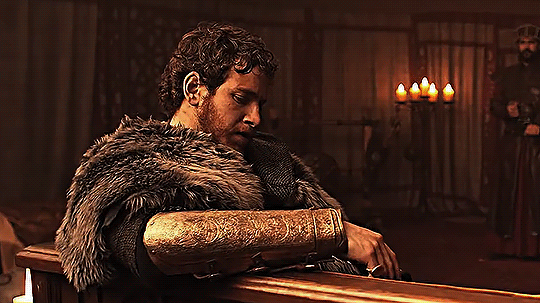


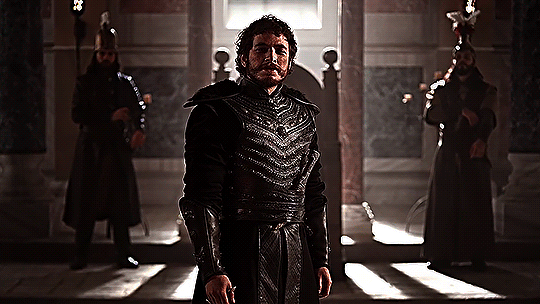
CEM YİĞİT ÜZÜMOĞLU as SULTAN MEHMED II in RISE OF EMPIRES: OTTOMAN
128 notes
·
View notes
Text
Week 5- Post 3
Lebanon History
Lebanon came into being as a contemporary state and the Lebanese Republic in 1926 with the fabrication of the Lebanese Constitution (Salibi 79 and Fawwaz, 255). Nevertheless, the emergence of culture began centuries ago. In the 1800s following religious shifts and changes, the Lebanese identity formed within Syria, bringing Christians and Muslims under the same government. Early Lebanese economy profited from silk production. Silk was mainly produced by Christian newcomers in the area which allowed them to emerge through villages and towns and form an emerging middle class. Under the Ottoman Empire, Lebanon appeared as a “model Ottoman province” reflecting the relevant peace and economic success of the republic (Salibi 78). Salibi captures the Lebanese culture at the time by including a common saying that, “Happy is he who has a shed to keep one goat in Mount Lebanon.” (Salibi 78). Mount Lebanon is an important aspect of the Lebanese identity as Lebanon as a polity began with the Empire of Mount Lebanon (Fawwaz 3). However, modern Lebanon began in the 1920s as “a product of the Franco-British colonial partition of the Middle East” (Fawwaz 75). Like other eastern states such as Syria, Jordan, and Iraq, Lebanon’s borders were imposed disregarding the will of its population, and borders were determined mainly based on the influence and interests of France in Syria. The final product of border negotiations became known as Greater Lebanon. France relied on Lebanon’s Christian population to retain borders, but the Muslim population posed more rejection, calling for an “independent Arab state” and annexation to Syria (Fawwaz 75). In the late 1940s, Lebanon worked with caution when facing the Arab-Israeli war and conflicts. On the evening of December 31, 1961, to January 1, 1962, “Lebanon experienced its first military coup d’etat” (Fawwaz 154). In June of 1967, the Arab-Israeli conflict expanded to war in Lebanon. From these conflicts, Parties formed within Lebanon that would act as the catalysts for the Lebanese civil war of 1975. As Fawwaz frames it, the 1970s in Lebanon were a switch from social crisis to civil war (157). Economic changes, agricultural crisis, the poverty belt, discrimination, and religious conflict all contributed to building tensions and the burst of civil war. Following 1975, Lebanon was surrounded by border conflicts while also facing inner tensions, including more coup d’etats. In 1982, Israel invaded Lebanon for the second time. War between the two nations repeated years after.
Completing the Story
The movie focuses on what is happening inside the village. We hear that there is religious conflict rising outside the village between Christians and Muslims, but we aren’t introduced to the specific context of the conflict. Through my research, I found that Lebanon has faced years of tension within and around its borders. Learning about the history and context of the movie, I was able to understand the conflict that Lebaki hints to throughout the movie. Her focus was on the role of women, but she tributed to religious conflict within Lebanon and war creeping in on its borders. Overall, Lebaki introduced cultural aspects of Lebanon while my research helped me understand driving factors behind the acts of the women. One of the many beautiful aspects of the movie that stood out to me was the humor. Cultures have different humors, and the comedic aspect of the movie adds a fundamental layer to Labaki’s representation of Lebanese women and the dynamics of the small village. My sources help complete the story by providing the historical context of the events, explaining the fears of the women, the conflict that took the lives of their boys, and what political interactions created the tension they wanted to distract their men from.
Bibliography
Fawwaz, Traboulsi. A History of Modern Lebanon – Second Edition. Pluto Press, 20 July 2012.
Salibi, Kamal. “The Lebanese Identity.” Journal of Contemporary History, vol. 6, no. 1, 1971, pp. 76-86.
Where Do We Go Now?. Directed by Nadine Lebaki, performances by Nadine Labaki, Layla Hakim, Claude Baz Moussawbaa, Antoinette El-Noufaily, 2011.
0 notes
Text
They will be remembered 🥶 || Rise Of Empires: Ottoman || Edit
youtube
0 notes
Note
Hello Professor Reames! How has the Macedonian Question influenced the historiography around Alexander?
The Macedonian Question & Ancient Macedonian Studies
(or, Come study ancient Macedonia! We cause riots!)
I’ll begin by explaining, for those unfamiliar, the “Macedonian Question” centers on who gets to lay claim to the name “Macedonia” and (originally) the geographical region, which is ethnically diverse but majority Slavic. It arose during the First and Second Balkan Wars of 1912-13, then returned after the breakup of Yugoslavia, from 1989 on.
I’ve been a bit chary about replying to this simply because it is (still) a hot topic, if not what it used to be even 10 years ago. Also…expect maps. Let me lead with three points:
1) The ancient Macedonians certainly weren’t Slavic. Slavs didn’t arrive in the area until the 6th century CE (AD), a millennia after Alexander lived. No ancient historian claimed they were Slavs, although some Slavic Nationalists used carefully edited quotes from ancient historians to support their own claims to the ancient Macedonians.
2) A lot of different peoples have passed through the Balkans and northern Greece (and even southern Greece) between now and 2300+ years ago. The Balkans have continued to be an ethnically contested area from antiquity to modernity, and who was “in charge” depended on what century it was.
3) Ancient concepts of Greek ethnicity didn’t ossify until around the Greco-Persian Wars. Prior to that, Greeks were more aware of/concerned with their citizenship/ethnicity in specific city-states (poleis) and/or language family groupings (Ionic-Attic, Doric, Aeolic).
Furthermore, these views were based on MYTH. To be Greek (Hellenic) meant to be descended from the mythical forerunner, Hellen, son of the equally mythical Dukalion (who survived the Flood…e.g., Greek Noah). There were other children of Dukalion, including a daughter Thyia. Thyia became the mother of Makedon, the mythical progenitor of the Macedonians.
So, by ancient criteria, Macedonians weren’t Hellenes (Greek). But they were kissing cousins. The ancients took these things seriously. That’s why I wanted to explain, so when the ancient Greeks said Macedonians weren’t Greeks, it didn’t mean what we’d consider it to mean today.
Back to the Macedonian Question … the issue of the Greekness of the ancient Macedonians got tied up in modern politics when Yugoslavia fell apart. During the First Balkan War and the division of Macedonia in 1913, “Macedonian Studies” didn’t exist yet. By the Third Balkan War (collapse of Yugoslavia), they did. And history was suddenly being pressed into the service of modern political agendas.
Now, let me back up and explain—as briefly as I can (so expect some judicious epitomizing)—the emergence of modern Greece and the First and Second Balkan Wars.
The Ottoman Empire began to collapse (not just decline) in the 1800s, and was essentially kicked out of Europe entirely by the First Balkan War and World War I. The last of it fell apart with the rise of Attaturk and the Young Turk Revolution, so Modern Turkey emerged in 1923.

Greece was part of that. The Greek War of Independence started in 1821, and Greece secured statehood in 1829/30, then became the Kingdom of Greece in 1832/3, which lasted until the military junta abolished it in 1973, after which it became the [Third] Hellenic Republic. From independence until the end of WWII, Greek borders expanded (see map below). Fun detail, the late Prince Philip, Elizabeth II’s husband, was a Greek (and Danish) prince.

The First Balkan War began in 1912, which was the Ottoman’s last gasp in Europe. The Austro-Hungarians wanted to make the Balkans a subject state, Russia wanted more control over the Black Sea, and Greece wanted to push north towards Thessaloniki and “Constantinople” (Istanbul). Ignoring Austro-Hungary, Serbia wanted to reconstitute “Greater Serbia” (14th Century Serbian empire)—which included a good chunk of Greece. And Bulgaria, with the strongest regional army, was eying the whole area south to the sea.

Oh, and let’s add in a dose of religious difference (Muslim vs. Orthodox Christian) just for snorts and giggles.
But this was basically about SEA TRADE access. So, for the three allies against the Ottomans, e.g., Bulgaria, Greece, and Serbia, Thessaloniki, Jewel of the Aegean, was the prize.
The war began October 8th, and by November 8th (1912), the three Balkan allies all hurried their armies to converge on Thessaloniki as the Ottomans withdrew. The Greeks got there mere hours ahead of the Bulgarians.
"Θεσσαλονίκη με κάθε κόστος!" (Thessaloniki, at all costs!) E. Venizelos
The war itself ended the next year (in part thanks to the Greek fleet in Thessaloniki), and Greece kept the city, and with it, still controls a lot of shipping in the Eastern Mediterranean. Shipping remains Greece’s second most profitable industry (after tourism).
Following the war’s conclusion, several issues arose, including how to partition the land—particularly the geographical region of Macedonia. The 1913 Treaty of London split it up between Bulgaria (smallest part), Greece, and Serbia (biggest part). Again, Greece and Serbia wanted to keep Bulgaria, with the most powerful army, from gaining substantially more land.

World War I intervened, and then the rise of Attaturk in Turkey and the “Megali Idea” in Greece. The Megali Idea, proposed at the Paris Peace Conference after WWI (map below), got Greece in trouble. It would have involved retaking not just the islands off Turkey’s coast, but chunks of the Turkish mainland, to match ancient Greek land claims. All THAT led to showdowns, with ongoing human rights abuses on both sides (including the Armenian Genocide earlier, which wasn’t related to Greece).

In 1923, Greece/Hellas and the new Republic of Türkiye agreed to an exchange of populations. So, Ottoman Turks/Muslims in Greece retreated to Turkey (were kicked out), and Greeks in Turkey retreated into Greece (were kicked out). About half those Greek refugees landed in Athens, whose population exploded overnight, creating an economic crisis. Many of the rest ended up in areas of northern Greece, where land from fleeing Muslims was to be had. Ergo, many new immigrants had very strong pro-Hellenic, anti-Muslim/anyone else feeling, and hadn’t been living for ages next to their (Macedonian) Slavic neighbors, who began to feel unwelcome. It also had negative effects on their Jewish neighbors, too. (The loss of Jewish life in WWII in northern Greece, especially Thessaloniki, is both shocking and heartbreaking.)
Keep in mind that the refugees on both sides had been living in their original countries not for a few decades, but for a couple centuries, or even longer in the case of the Greeks in Anatolia/Turkey. The first Greek colonies there date to the 700s/600s… BCE. There’s a good reason the Greeks and Turks hate each other, and it’s not just Cyprus. The atrocities at the beginning of the 20th Century were awful. Neither side has clean hands.
Anyway, there was a second Balkan War in 1913, which I’m ignoring, except for the map below. It amounts to Bulgaria getting pissy about their short shrift in the earlier Macedonian land division.

Then came fallout from World War II, when Greece got the Dodecanese from Italy, et al. But I want to fast forward to the collapse of The Berlin Wall in Eastern Europe, November 9, 1989, and Yugoslavia’s dissolution shortly after. That ushered in the Third Balkan War, or Yugoslav Wars of the 1990s.
Compared to the Bosnian Genocide and other shit going down with Milosevic, the return of the Macedonian Question seems minor. It involved the Yugoslavian province of Macedonia asking to be called “Macedonia” and Greece having a very public, international melt-down.
The entire dust-up confused much of the rest of the world. The number of times I’ve had to explain it to (non-Greek, non-Slavic) people, who just boggled…. I’ve also seen tourists stand in polite perplexity while Greeks went on a hand-waving tear about how Macedonia has been Greek for 4000 years!!! [I’ve got a t-shirt with that on it.] Btw, 4000 years dates before the first Helladic peoples even migrated into the peninsula. Anyway….
Greeks consider the name Macedonia theirs, on historical grounds. They didn’t object to the new country, but wanted it called Skopje, after the capital, or something, anything not “Macedonia.” Meanwhile, the (Slavic) Macedonians were enormously insulted and pointed to the fact they lived in a region called Macedonia, and their ancestors had been living there for centuries, so why couldn’t they call their new country by the name of the region it occupied? Stated fears of actual territorial expansion by either side were largely scare tactics and fringe rhetoric. It really was all about the name. But increasingly, that began to include claims on the ancient Macedonians, or cultural appropriation. The new Macedonian state (FYROM, then) didn’t do itself any favors with their choice of the (ancient) Macedonian sunburst for their flag and naming their airport after Alexander, et al.

That’s how ancient history got sucked into all of this in a way it didn’t the first time.
Now, let me repeat. The ancient Macedonians were not Slavs. The Thracians were not Slavs either, nor the Paionians, nor the Illyrians, nor the Celts north of them. You won’t find the Thracians called “Slavic” in Bulgarian Museums, even while they take very good care of their regional history.
By the 1990s, Macedonian history had emerged as something more than just “Alexander the Great and Philip,” and questions arose about who these people may have been. Were they Greeks like the Thessalians and Epirotes to their south and west? Or were they non-Greeks like the Thracians, Paionians, and Illyrians to their north? This was an academic (not modern political) question, and involved: 1) what did Makedoniste (“to speak in the Macedonian manner”) mean? Was that a dialect or a different language?; and 2) to what degree did ancient Greeks really consider them non-Greeks (e.g., barbarians)? The fact we had so little epigraphy from the area complicated the language question. And ancient Greek politics complicated the second question. Were the angry repudiations by Demosthenes & Friends a real, widely held sentiment…or just ancient Athenian nationalism and anti-Philip propaganda?
This was mostly nerdy stuff that should have remained safely ensconced at dull specialist panels at academic conferences.
Except …. Manolis Andronikos had found the Royal Tombs at Vergina in 1978, and Greece was bursting with pride (as they should have been). Macedonia was back on the map! Tourists still largely stuck to the Greek south, but The Greek Ministry of Culture and Sport saw an opportunity, even back then, to capitalize on tourism, so you can begin to see why it was important for “Macedonia” to remain Greek. Can’t have a country calling itself Macedonia and maybe confusing people about who Alexander and Philip had been, and where they’d lived (and syphoning off possible tourism dollars).
That may sound unduly cynical, but I’m actually with the Greeks on this, even if I’ve always rolled my eyes over the name thing. And, as noted above “Macedonia” was laying active claim to Philip and Alexander as if there was direct continuity between the ancient Macedonians and the modern ones. See below, the giant Alexander statue erected in Skopje (2011), the biggest in the whole city. It’s formal name these days is “Great Warrior,” by agreement with Greece in order to get to call themselves “Northern Macedonia” in NATO. But it’s Alexander.

Like I said, they weren’t doing themselves any favors, although those arguing in their defense liked to point out that Greece had started it, over the name.
Of course the increasingly heated rhetoric around the name, and ownership of Alexander and Philip, enveloped ancient history like the ash cloud from Vesuvius smothered Pompeii and Herculaneum. By the mid-1990s, “middle ground” wasn’t allowed. If one expressed any doubt about the Greekness of the ancient Macedonians, that was heard as, “You’re siding with the Skopjans!” This dispute was still going strong to the point there were riots and protests at the Balkan Studies’ 7th International Symposium on Ancient Macedon in Thessaloniki on October 16, 2002. These protests erupted over the presence of Kate Mortensen, Ernst Badian, and Daniel Ogden, albeit the protests involved different objections for each scholar. Badian, along with Peter Green and Gene Borza (not present), had long been in the crosshairs of the vehement “Macedonia was Greek!” crowd. But poor Kate got targeted because of her paper, “Homosexuality at the Macedonian Court,” and Daniel had the temerity to present about witchcraft at Philip’s court (UnChristian things!). There were some 40 police called in to protect the presenters. You cannot make up this shit.
Btw, by no means were all Greeks, especially not all Greek scholars, hostile to the (largely Anglophone) Macedoniasts who questioned the ethnicity of the ancient Macedonians. Olga Palagia and Gene Borza remained friends and even wrote articles together, but Olga was retired and had a certain freedom from pressure. Manolis Andronikos and Gene also remained friends until Manolis’s death in 1992. But there was an Official Party Line that had to be maintained, or risk losing an academic job or other position in the Ministry. This also got tied into the identity of the occupants of Royal Tombs I and II at Vergina. Greece’s official position is that these are Amyntas III and Philip II, respectively. This is far from a settled matter, however, especially outside Greece.
For more detail from somebody right in the middle of especially the early parts of the quarrel over who’s buried in “Philip’s Tomb” and the ethnicity of the Macedonians, check out Peter Green’s chapter 10, “The Macedonian Connection,” in Classical Bearings.
To return to the question about how it’s affected historiography, other than resulting in hostility towards non-compliant ancient historians (having their work essentially banned in Greece) and the occasional riot at an academic conference (!!), it also resulted in the production of TWO quasi-competing “Companions” to ancient Macedonia at the end of the first decade of the 2000s.
The original proposal (A Companion to Ancient Macedonia, Roisman and Worthington, Wiley-Blackwell, 2010) had meant to include a number of high-profile scholars of both Greek and non-Greek background. But one of those was Loring Danforth (The Macedonian Conflict). When it came out that he was writing the chapter on modern Macedonia, the Greek contributors revolted en masse. (Some were genuinely furious, others had to, to keep their jobs.) Another Companion was put together with Robin Lane Fox at the editorial helm (Brill’s Companion to Ancient Macedon, Brill, 2011), and the Greeks (and a few others) jumped ship. That was a nice break for some younger Macedonian scholars, incidentally, who were then tapped to write chapters for the Roisman/Worthington volume—and very good chapters, I might add. But the end result is one heavily archaeological Companion (Lane Fox) and one heavily historical one (Roisman/Worthington), and which still has Danforth.
Between the arguments of the 1990s and now, however, one important shift has occurred: enough epigraphical data has emerged, and not just later [Hellenistic], to argue the ancient Macedonians did speak a form of Doric Greek. Many/most of us are now a lot more comfortable agreeing that the ancient Macedonians can be called “Greek” without feeling as if we’re selling our academic souls--even if we may still argue that’s not Philip in Royal Tomb II...an identification that some of the younger Greeks also aren’t sold on. And Philip in Tomb II was never the highly charged political issue that the Greekness of the ancient Macedonians was. It just got tied up in it for coming up around the same time. One Greek friend put it succinctly (paraphrased), “It felt like the non-Greeks, especially the Americans and Aussies, were trying to take away Philip and Alexander from us. Tomb II wasn’t Philip, and the Macedonians weren’t even Greeks.”
That may be a bit hyperbolic, but feelings don’t necessarily respond to logic, and Greece would like to have their bona fides.
So, a chunk of the tension from the 1990s has subsided. The Greekness of the ancient Macedonians is largely a non-topic in Macedonian studies today. We’re more interested in new and exciting things like revelations from recent archaeology regarding the sophistication of the Macedonian kingdom well back into the Archaic Age, the real impact of Persia and how early, and what exactly was going on up there before (and after) the Greco-Persian Wars. Or at least, those are certainly my burning questions about the Argead Kingdom up to Philip and Alexander.
#asks#ancient Macedonia#modern Northern Macedonia#Alexander the Great#Philip II of Macedon#Macedonian Question#Bulgaria#Greece#Serbia#ancient Greece#Classics#Ottoman Empire#1923 Exchange of Populations#turkiye#Turkey#Hellenic Republic#Kingdom of Greece
20 notes
·
View notes
Text
Ah so you're looking for a more comprehensive response? 😂
There is a difference between wanting to acquire knowledge via self-study and seeking out accredited coursework.
My education is not a method to appease or put down people who disagree with my perspective, but an outlet to solidify and justify my beliefs, however since you’re so adamant about judging my credentials allow me to provide you with a more thorough answer, which will be the last you’ll hear from me.
A small note that you will see at the end of this post too:
The college courses enable me to better comprehend resources such as the UN resolutions drafted against Israel, the ICJ rulings, the humanitarian aid issues and distribution, the nuances of diplomatic rulings and how they have impacted the Middle East over the years. The free online courses are predominantly an outlet to streamline my research and teach people about what the ICJ, EU, etc. are, how to accurately site sources, etc. They are the first step, not the entire staircase.
A concise format wasn't to your taste, but luckily for you, I always keep a list of the books and research papers I read. The resources listed below are written by many acclaimed figures, from presidents to CIA intelligence, historians, political figures and more. Perhaps it will do you some good to divert from your Zionist propaganda and pick up some actual literature.
Anyone interested in learning more about Palestinian, Middle Eastern and Islamic history can take a look at the below resources too <3
First, the books. Each book, research paper, or online resource I consume is first heavily scrutinised for its authenticity. Since I was 13, I’ve read at least 40 books on this topic, some of the main ones being:
On Palestine:
"International Law and the Israeli-Palestinian Conflict: A Rights-Based Approach to Middle East Peace" edited by Susan M. Akram, Michael Dumper, Michael Lynk, and Iain Scobbie
"Palestine, Palestinians and International Law" by Francis A. Boyle "The Israeli-Palestinian Conflict: Legal, Political and Economic Dimensions" edited by Robbie Sabel and Clive Jones
"International Law and the Prosecution of Israeli War Crimes" by Valerie Oosterveld, Michael P. Scharf, and Paul R. Williams
"The European Union and the Arab Spring: Promoting Democracy and Human Rights in the Middle East" by Joel Peters
"Israeli Apartheid: A Beginner's Guide" by Ben White "Decolonizing Palestine: Hamas Between the Anticolonial and the Postcolonial" by Somdeep Sen
"The United Nations and the Question of Palestine" by Various Authors (UN Publications)
"The Israeli-Palestinian Conflict: A Historiographic Essay" by Ilan Pappé
"Gaza: An Inquest into Its Martyrdom" by Norman Finkelstein
"The Israel Lobby and U.S. Foreign Policy" by John J. Mearsheimer and Stephen M. Walt
"Palestine: Peace Not Apartheid" by Jimmy Carter
"The Hundred Years' War on Palestine: A History of Settler Colonialism and Resistance, 1917–2017" by Rashid Khalidi
"The Ethnic Cleansing of Palestine" by Ilan Pappé
"Jerusalem: The Biography" by Simon Sebag Montefiore
"The Palestinian Nakba: Decolonising History, Narrating the Subaltern, Reclaiming Memory" edited by Nur Masalha
On Middle East History:
"The Middle East: 2000 Years of History from the Rise of Christianity to the Present Day" by Bernard Lewis
"The Great War for Civilization: The Conquest of the Middle East" by Robert Fisk
"Collateral Damage: America's War Against Iraqi Civilians" by Chris Hedges and Laila Al-Arian
"Killing Hope: U.S. Military and CIA Interventions Since World War II" by William Blum
"Blackwater: The Rise of the World's Most Powerful Mercenary Army" by Jeremy Scahill
"The Crusades Through Arab Eyes" by Amin Maalouf
On Islamic History:
"A Wolrd Without Islam" by Graham E. Fuller. Honestly I would recommend all of his books.
"The Ottoman Empire, 1700-1922" by Donald Quataer
"Lost Islamic History: Reclaiming Muslim Civilisation from the Past" by Firas Alkhateeb
"The Ornament of the World: How Muslims, Jews, and Christians Created a Culture of Tolerance in Medieval Spain" by María Rosa Menocal
"Destiny Disrupted: A History of the World Through Islamic Eyes" by Tamim Ansary
"The Venture of Islam" by Marshall G.S. Hodgson
"The Great Arab Conquests: How the Spread of Islam Changed the World We Live In" by Hugh Kennedy
On general political topics related to Islam and the Middle East:
"Manufacturing Consent: The Political Economy of the Mass Media" by Edward S. Herman and Noam Chomsky
"Edward Said and the Post-Colonial Theory: An Introduction" by Bill Ashcroft and Pal Ahluwalia
"Islamophobia: A Historical Perspective" by John L. Esposito and Ibrahim Kalin
"Blowback: The Costs and Consequences of American Empire" by Chalmers Johnson
"Dirty Wars: The World Is a Battlefield" by Jeremy Scahill
"Islamophobia: The Ideological Campaign Against Muslims" by Stephen Sheehi
"Islam and the Blackamerican: Looking Toward the Third Resurrection" by Sherman A. Jackson
"Muslims and the Making of America" by Amir Hussain
Now, onto the courses.
Ofc free or online self-education available at a limited price is something a Zionist would frown upon for it contradicts your propaganda machine.
Your exact words were ‘incapable of reading anything more complex than an infographic,' not only showcasing your mindset but also your perspective on a person's willingness to educate oneself.
The college courses enable me to better comprehend resources such as the UN resolutions drafted against Israel, the ICJ rulings, the humanitarian aid issues and distribution, the nuances of diplomatic rulings and how they have impacted the Middle East over the years. The free online courses are predominantly an outlet to streamline my research and teach people about what the ICJ, EU, etc. are, how to accurately site sources, etc. They are the first step, not the entire staircase.
You chose to judge my capacity to academically and intellectually comprehend these situations and my knowledge of Middle Eastern and Islamic history, because your own sources probably water down to Zionist news outlets and propaganda machines.
Yes, I am allowed to speak up on political and humanitarian issues highlighted in my findings.
You are allowed to have contradicting opinions however your decision to resort to insults, name-calling, and belittling shows how unfit you are for such a complex intellectual setting. Your credentials and academic background are of little concern to me, for your tone in itself speaks volumes.
Perhaps you’ll actually take some time to learn about the topics you so passionately put down others for.
So when Israel does it it’s ‘self defence’ but when Iran does it it’s terrorism? At this point I’m not even surprised by western media hypocrisy
#haya: talks politics & religion#damn this took a while#stand with palestine#free gaza#current events#islamic#islamic history#middle east conflict#middle east crisis#bush administration
286 notes
·
View notes